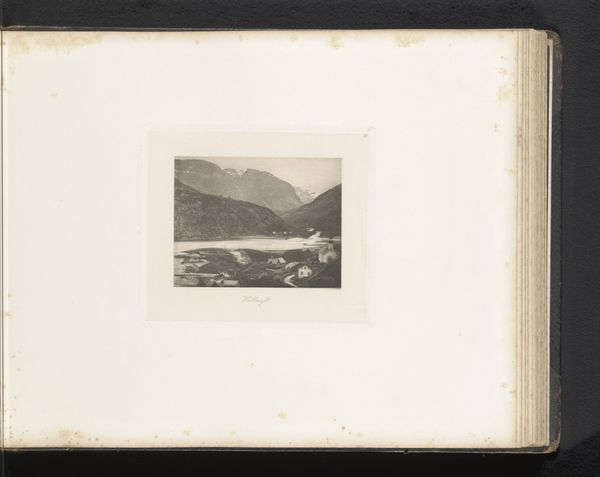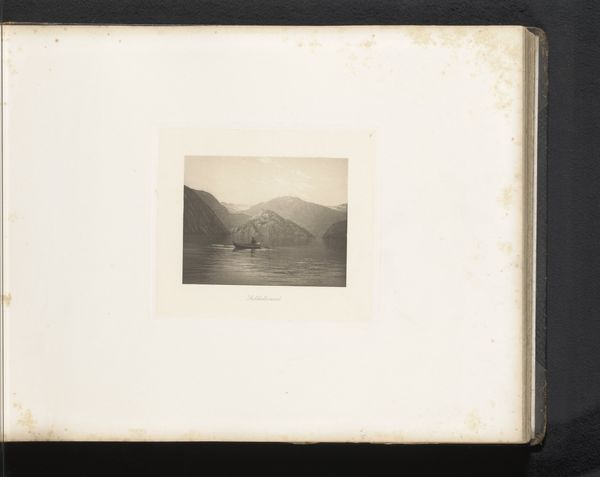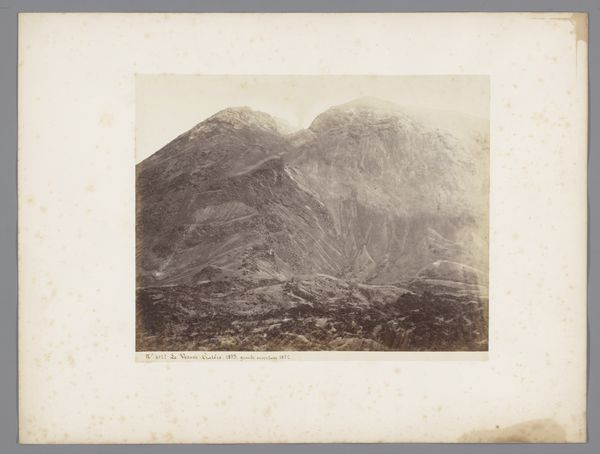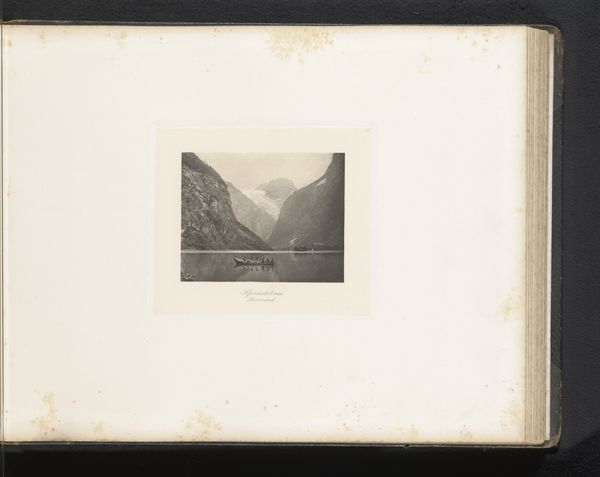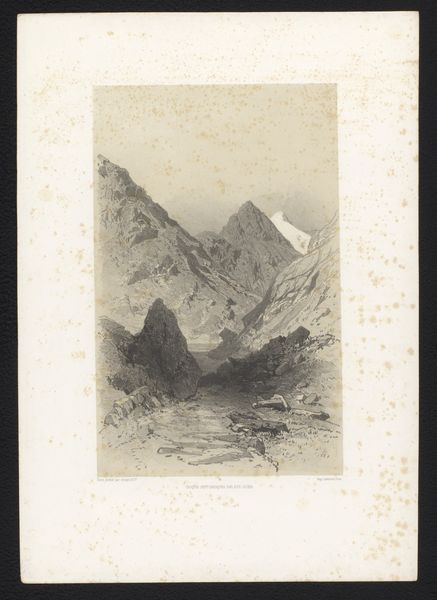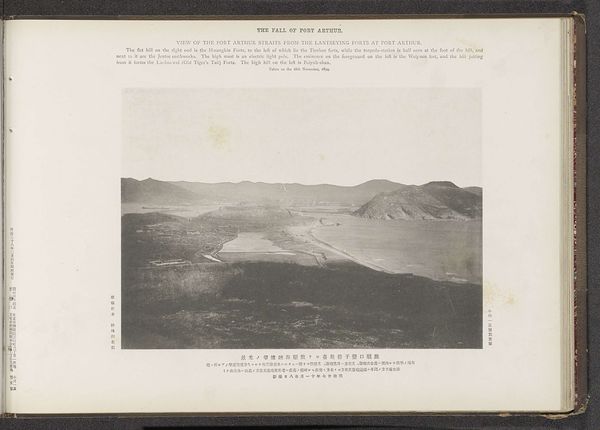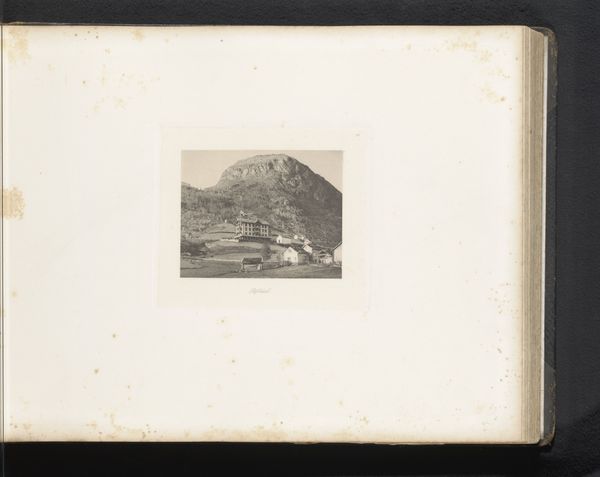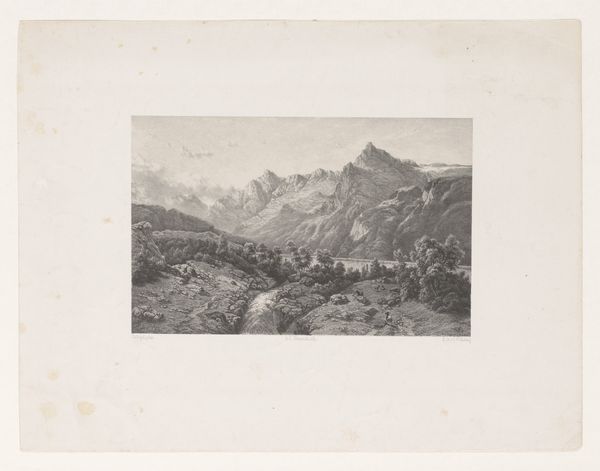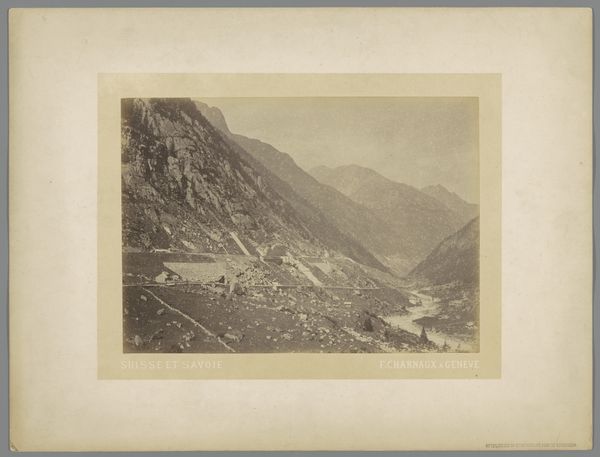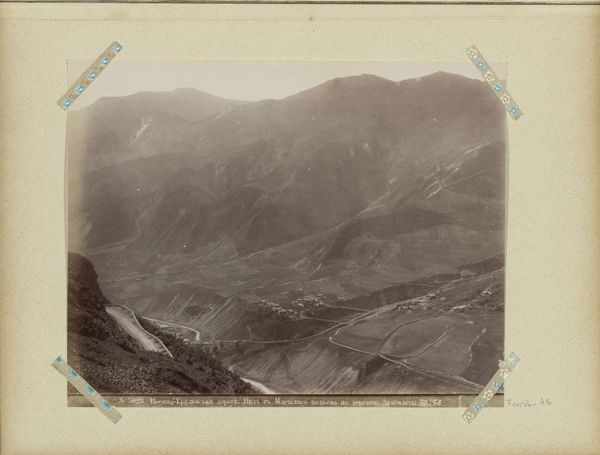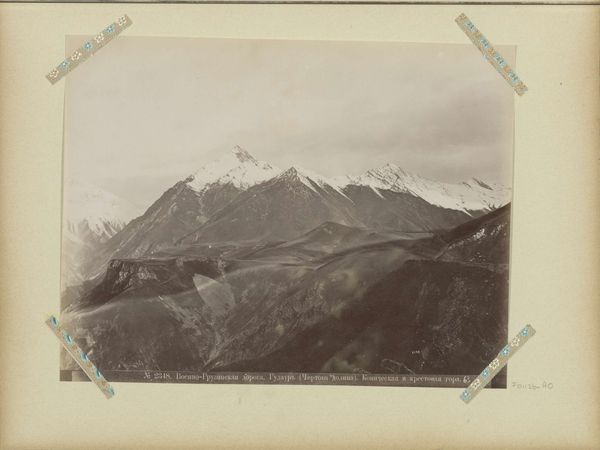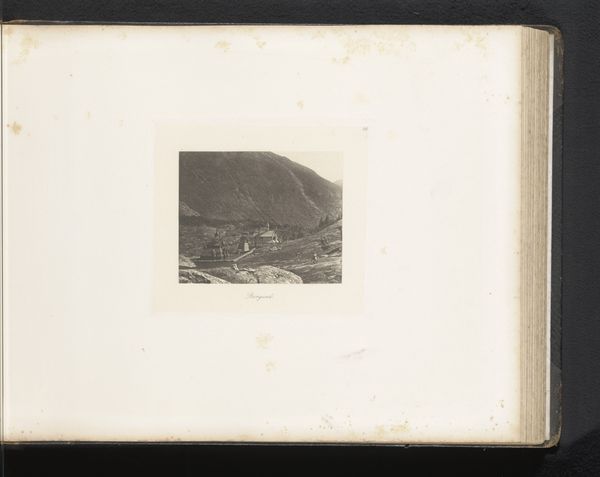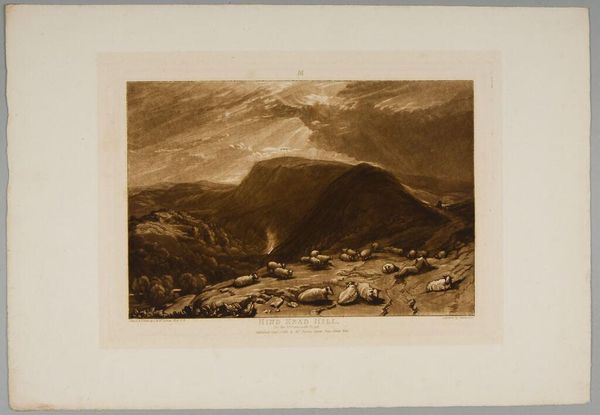
photography, albumen-print
#
impressionism
#
landscape
#
photography
#
coloured pencil
#
albumen-print
Dimensions: height 124 mm, width 173 mm
Copyright: Rijks Museum: Open Domain
Curator: The melancholic light and somber tones really give me a strong first impression. There's something about this landscape, despite the diminutive figures, that feels monumental and slightly isolating. Editor: Well, you've definitely captured the atmospheric quality of this albumen print titled, "Gezicht op de bergen rond Alum Bay," or "View of the mountains around Alum Bay." We believe it was taken around 1889 by Henry Pauw van Wieldrecht, and it resides here in the Rijksmuseum collection. The albumen print itself is part of a larger photographic album, so that context also contributes to its materiality. Curator: Albumen. That means egg whites were used to bind the photographic chemicals to the paper. Talk about a fragile process to capture something so seemingly enduring as mountains. The labor involved is already immense to think about. Editor: It is quite fascinating. Look at how the photograph itself portrays mountains, a universal symbol of stability, endurance, aspiration, often associated with spiritual ascension, but framed within such an ephemeral and delicate medium. Consider that those mountains themselves held cultural significance, and even spiritual meaning in certain societies, embodying strength, permanence. They served as landmarks. Curator: And consider how their extraction impacted communities around them as an extractive industry, reshaping both the physical landscape and social fabric around Alum Bay itself. So while mountains themselves may represent different themes, what could Van Wieldrecht have been attempting to suggest? Was this artistic experimentation with a photograph taken, or more documentative? The way figures are at the foot of mountains suggest an anthropocentric and possibly colonial relationship to this region, where nature serves the colonizer’s need. Editor: Perhaps. Or is the contrast about the fleeting human existence against the backdrop of enduring nature? A simple memento mori, translated through landscape photography? In some spiritual beliefs, mountains also represent the meeting point between heaven and earth, the visible embodiment of the sacred. The artist may not necessarily mean that for all observers; in his artistic process and intent, a personal reflection may become larger for everyone that stands before the work. Curator: Very compelling point. It emphasizes the cultural and social layers baked into even what seems like a simple landscape. So, next time, if we observe landscapes, perhaps it might mean interrogating labor relationships with landscapes, or their symbolic and cultural weights and functions through art. Editor: Indeed. Each time the mountain faces a camera, its visual and artistic story branches outwards!
Comments
No comments
Be the first to comment and join the conversation on the ultimate creative platform.
